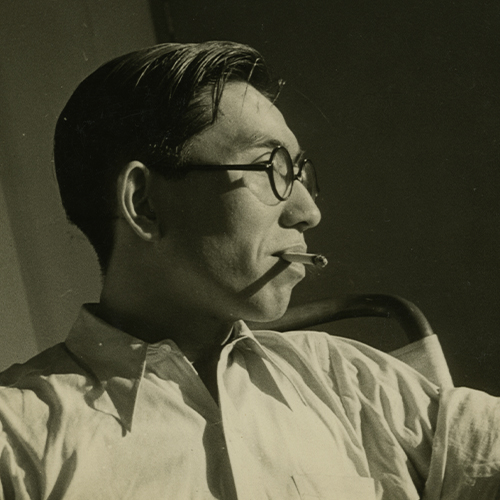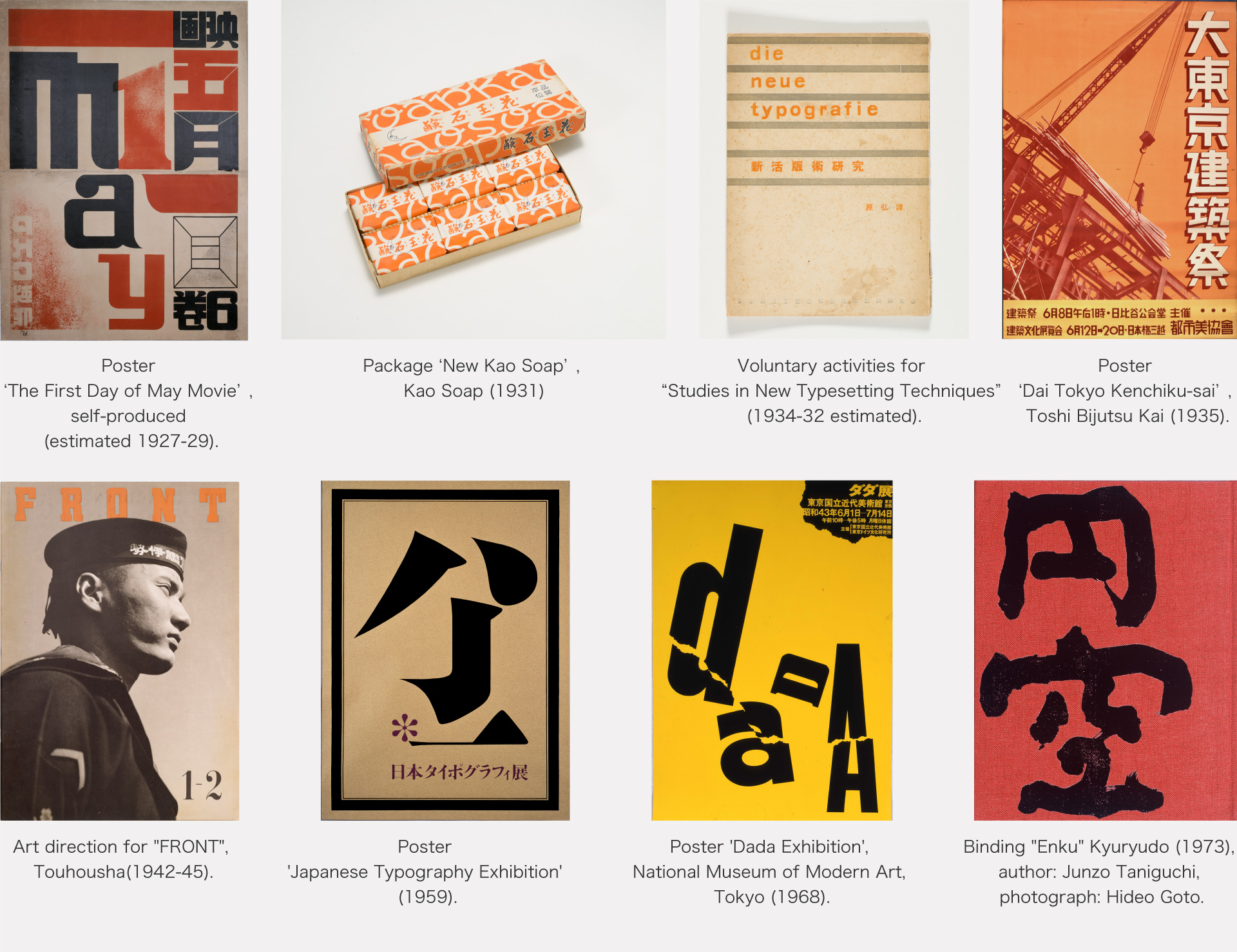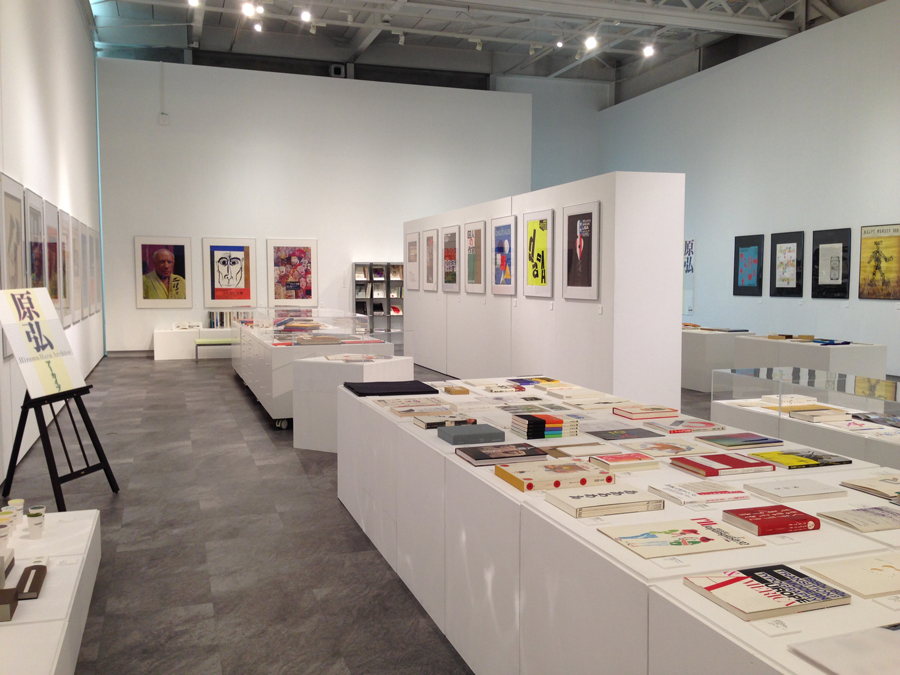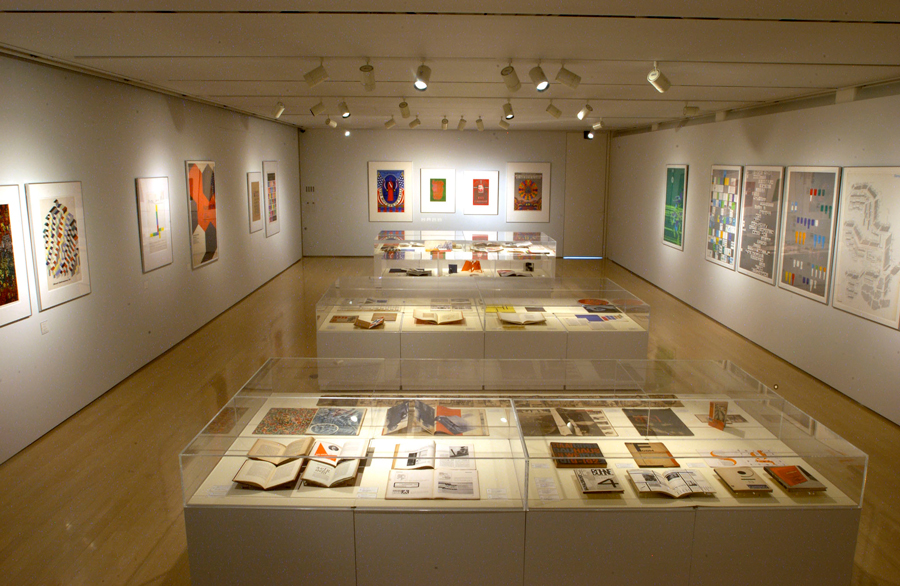Japanese Design Archive Survey
DESIGN ARCHIVE
Designers & Creators
Hiromu Hara
Graphic Designer
Author:Yasuko Seki
PROFILE
Profile
Hiromu Hara
Graphic Designer
1903 Born in Nagano Prefecture
1918 Entered Tokyo Prefectural Kogei School (now Tokyo Metropolitan Kogei High School), Printing Department
1921 Graduated from the school and becomed an assistant in the plate-making and printing department.
1927 Participated in the formation of the "Zokei-Bijutuka-Kyokai(Society of Artists)".
1931 Became assistant teacher at the Tokyo Prefectural Kogei School
1932 Formed the Tokyo Printing Artist's Circle and became its representative.
1933 Participated in the formation of the first Nippon-Kobo.
1934 Participates in the formation of the Chuo-Kobo
1935 Became a lecturer at the Imperial Art School (now Musashino Art University), Department of Design and Crafts (-40).
1941 Participated in the founding of the "Touhousha" and became head of the art department (-45).
1945 Establishment of the "Bunkasha (1st)" (-46)
1951 Participates in the establishment of the "Japan Advertising Artists Club".
1952 Appointed chief professor of the commercial art department of the Musashino Art School (now Musashino Art University).
1953 Participated in the establishment of the Japanese Society for the Science of Design
1959 Participated in the first issue of the magazine “Graphic Design”
1960 Participated in the establishment of Nippon Design Centre and became director. Chairman of the Japan Executive Committee of the World Design Organization
1962 Appointed as a senior professor at Musashino Art University, Department of Industrial Design and Commercial Design, Faculty of Art and Design.
1964 Member of the Design Advisory Committee for the Tokyo Olympics
1971 Medal with Purple Ribbon
1978 Order of the Rising Sun, Gold Rays with Rosette
1986 Passed away

Description
Description
Hiromu Hara can be regarded as the man who laid the foundations of graphic design in Japan. Before Hara, graphic design was an extension of 'painting', incorporating the Art Nouveau and Art Deco styles and inheriting the beauty paintings from the Edo period. For example, the book bindings and beauty-painting posters by artists such as Yumeji Takehisa, Goyo Higuchi and Hisui Sugiura (the poster for the Mitsukoshi kimono shop is a typical example) were symbolic of the state of things at the time.
Hiromu Hara emerged in the world of graphic design. Hara was born the heir to a printing company and studied printing technology at the Tokyo Prefectural Kogei School, but chose to become a designer after meeting his teacher, Takao Miyashita. However, Hara's qualities as a technician and researcher took him beyond the confines of a single designer and shaped the foundations of various fields.
The first part of Hara's foundation building was to reflect the graphic concepts and elements established in the early 20th century, such as typography, photography and layout, in his own designs. This resulted in the modernisation of Japanese graphic design.
The second was the development of 'paper'. In collaboration with Takeo, a trading company specialising in paper, he created several types of fine paper, such as Angle Colour, Mermaid and Sheepskin, which expanded the possibilities for graphic expression.
Among other things, Hara participated in the establishment of organisations and companies that went on to become leaders in Japanese design, and through their activities contributed to improving the status of design and designers, researching theories and expanding their role in society. He also played a major role in national events such as the Tokyo Olympics. At the same time, he also practised and nurtured younger generations, including teaching at Musashino Art University for a long time. In his later years, he produced highly prestigious bindings for encyclopaedias, complete works of art and other publications.
In the field of graphic design, Hara took an academic approach to his work throughout his life, distinguishing himself from commercial work. At a time when overwhelming market-orientation is steadily permeating the design world, we must not forget the existence of a solitary designer in the form of Hiromu Hara.
Masterpiece
Masterpiece
Poster ‘The First Day of May Movie’, self-produced (estimated 1927-29).
Package ‘New Kao Soap’, Kao Soap (1931)
Voluntary activities for ”Studies in New Typesetting Techniques”(1934-32 estimated).
Cover design for the magazine" Kouga", Kogasha(1928-35).
Poster ‘Dai Tokyo Kenchiku-sai’, Toshi Bijutsu Kai (1935).
Art direction for "TRAVEL IN JAPAN", Ministry of Railways (1935-1940).
"Mural for Japan Sightseeing Photographs" (1937).
Art direction for "FRONT", Touhousha(1942-45).
Fine paper ‘Angle Colour’, ‘Mermai’ Direction, Takeo (1959-1972).
Poster 'Japanese Typography Exhibition' (1959).
Ticket, etc. 'Tokyo Olympics' (1964).
Poster 'Dada Exhibition', National Museum of Modern Art, Tokyo (1968).
Binding "Enku", Kyuryudo (1973), author: Junzo Taniguchi, photograph: Hideo Goto.
Binding "Oriental Ceramic Taikan", Kodansha (1974).
Binding "Sekai Daihenkyu Jiten" (World Encyclopaedia), 35 volumes, Heibonsha (1975).
Publications
”Studies in New Typesetting Techniques”, Tokyo Prefectural School of Arts and Crafts, Printing and Printing Department Study Group, (estimated 1931-32).
”Graphic Design Compendium Volumes 1-5”, (co-edited) Bijutsu Shuppansha, (1960-1962)
”Graphic Design in the World 2 (ed.)”, Kodansha, (1974)
”Hiromu Hara, The Origin of Graphic Design”, Heibonsha (1985)
“Contemporary Japanese Book Design 1975-1984”, (co-edited) Kodansha, (1986)

Report
Report
Drove the modernisation of Japanese Graphic Ⅾesign.
Design before Hara
Born in 1903, Hiromu Hara lived during the turbulent period of Japan's economic growth before, during and after World War II, and his activities encompassed the budding and mature periods of modern Japanese design.
The Japanese graphic design world before and after Hara included Hisui Sugiura (1876-1965), who created posters for the Mitsukoshi kimono shop and cigarette packages for the Ministry of Finance Monopoly Bureau (now JT); AyaoYamana (1897-1980), who established the elegant Art Deco style and design identity of the early Shiseido company, and Takashi Kono (1906-1999), who was one of the first to awaken to modernism and worked on everything from flat surfaces to spatial design. Hiromu Hara took a theoretical approach to design. The following is a chronological review of Hara's activities and the history of design in Japan.
1903-1941 (before and during the war), the period of learning
Studied at the Tokyo Prefectural Kogei School
Hiromu Hara was born in 1903, one year before the Russo-Japanese War, as the eldest son of a family in Iida, Nagano Prefecture, which ran a printing business called Hakkosya. In 1918, he entered the newly established Tokyo Prefectural Kogei School (now Tokyo Metropolitan Kogei High School) to take over the family business. He then enrolled in the printing department and studied plate-making and printing. Although he was expected to be the heir to the printing company, he learnt design methods from his teacher, Takao Miyashita (a designer), and became interested in design methods such as lettering and layout.
After graduation in 1921, he did not return to his parents' home, but remained at his alma mater as an assistant in the printing department, succeeding Miyashita and teaching lithography and printing designs. At that time, he published at his own expense the technical instruction books ”Hiro Hara Lithographic Designs” and "Hiromu Hara Lithographic Designs Nr. II". For the next 20 years, he taught at his alma mater while continuing his studies as a designer.
Encountering European art and design
At the beginning of the 20th century, when Hara took his first steps into the world of design, Europe was in the midst of turbulent times following the First World War and the Russian Revolution. In the field of art, there was Cubism, Futurism, Russian Avant-garde, Art Deco, Dadaism and, in 1919, the Bauhaus, led by Gropius and others, was born. From art, design, architecture and other visual arts to theatre, literature and music, an avant-garde art movement that later had a decisive influence on modern design blossomed simultaneously. Naturally, this wave was imported to Japan through magazines and books, and had a major impact on Japanese art and design.
Japan, where Hara lived in his twenties, was filled with democratic and free momentum following the Taisho Democracy, and the emerging art movement was flourishing in response to the aforementioned swell of art movements coming from the West. Hara also frequented the cutting-edge ’Tsukiji Sho Gekijo(Theatre)’, where he experienced the emerging European art movement through performances by stage designer Kenkichi Yoshida and playwright and plastic artist Tomoyoshi Murayama. He later joined the Zokei Bijutuka Kyokai(Artists Association) , which was formed in 1927, and produced works such as 'Read the Non-Producer Newspaper' and 'Break the Chains!' and other poster works, and emerged as a designer.
In 1932, after learning about the Bauhaus through magazines and other sources, Hara taught himself the ideas and theories of modern design and, as a summary of his studies, published on his own the book” New Studies in Print Technology”, which introduced the concept of 'new typography' as theorised by Moholy-Nagy and others. He also came across the work of El Lissicky in a German magazine and was struck by the concise and bold layout of the two-colour prints. Hara had mastered design theory from the perspective of a (printing) technician, researcher and designer.
His best-known works from that period include the poster "The First of May Movie" (estimated 1927-29) and the new packaging for Kao soap. The Kao work was won through a nominated competition.
Expansion of contacts and activities
Meanwhile, in 1932, he took part in the production of the photographic magazine ”Kōga”, which led to contacts with a wide range of people. Among others, his encounter with photojournalist Yonosuke Natori, who had returned from Germany, led to his participation in the founding of the ‘Nippon-Kobo (First Stage)’in 1933, together with Natori, Ihei Kimura, Nobuo Ina and Sozo Okada. However, the first Nippon-Kobo ended after a year due to friction between Natori and other members, and Hara left with Kimura, Ina, Okada and others to found the 'Chuo-Kobo' in 1934. Natori reunited the second 'Nippon Kobo' with photographer Ken Domon and graphic designers Ayao Yamana, Takashi Kono and Yusaku Kamekura, and later published the overseas PR magazine" NIPPON".
The Chuo-Kobo became Hara's base of operations, and he established the International Press Photography Association within the office to produce exhibitions and printed materials. A major milestone for Hara was the 'Japan Sightseeing Photo Mural', which was exhibited in the Japan Pavilion at the 1937 Universal Exposition in Paris. This was a huge tourist poster, 2.2 metres high and 18 metres wide, with photographs of Japan's four seasons, nature, places of interest and customs on a large wall. Hara was entrusted with the selection of the photographs and the composition of the screen. At the time, artificial colouring of black-and-white photographs was considered an evil practice, but Hara dared to try a small resistance and showed new possibilities for graphic expression using photography.
In 1941, Hara left his teaching position at the Tokyo Prefectural Kogei School, where he had taught for 20 years, and shifted the focus of his activities to design. At the same time, he became head of the art department of the publishing company Touhousha, founded by fellow Chuo-kobo member Sozo Okada, and was art director of ”FRONT”, a graphical magazine for the foreign propaganda of the Empire of Japan published by the company. The magazine was a large, A3-size, two-colour photogravure print publication whose purpose was to publicise Japanese national prestige and ideology outside Japan, and was translated into up to 15 languages.
Hara designed all 15 language editions, using layout and lettering techniques. They seem to have been quite free and experimental, incorporating, for example, Lissickian expressions and the style of American magazines. The workmanship is still good enough to be used today. However, both “NIPPON” and “FRONT” were criticised after the war as war propaganda media. The company building was burnt down in the Tokyo air raids of March 1945, and the following year a new company, Bunkasha, was founded, but was forced to dissolve in 1947, despite working on several printed publications.
1946-1969 (high post-war economic growth)
Period of enrichment
From 1945 to the 1960s, Japan experienced post-war reconstruction and rapid economic growth, and design also benefited from this tailwind, achieving significant development in both mass and quantity. Hara's design activities were no different. During these 15 years, Hara did not limit himself to his own graphic work, but also played a central role in all areas, including cultural and technical enlightenment of design, development of design theory, improvement of the status of designers and design education.
In 1947, at the age of 44, Hara became a freelance designer when Bunkasha was dissolved, and like all Japanese at the time, he himself was forced into a difficult life. Then, in 1950, he became an advisor to Heibonsha and became involved in the binding of numerous encyclopaedias.
In 1951, Hara formed a professional association, the Japan Advertising Artists Club (hereafter Nissenbi), with Fumio Yamana as chairman and about 50 designers, including Takashi Kono and Yusaku Kamekura. The Nissenbi was responsible for raising the status of graphic design and discovering young designers by organising exhibitions, publicly inviting entries and selecting winning entries. In fact, the Nissenbi established an era as a gateway to success for young designers. In 1970, however, the student movement brought an end to Nissenbi's 20-year activities. In a sense, it could be said to have fulfilled its role.
In 1952, Hara was appointed chief professor of the Department of Commercial Art at Musashino Art University. When the National Museum of Modern Art, Tokyo opened in Takebashi, he designed almost all of the museum's exhibition posters for 23 years until 1975, amounting to 200 pieces. This shows that Hara's intelligent, unorthodox and orthodox 'design' was a good match for 'modern art'.
In 1960, Hara participated in the establishment of Nippon Design Centre, which was founded as "a creative group to develop and raise the quality level of advertising design in Japan", as a core member with eight companies that had invested in the company, including Toyota, Toshiba and Nomura Securities, as well as Yusaku Kamekura and Ryuichi Yamashiro, who later became president. During the period of high economic growth, new products and services were being created on a daily basis, and high-quality design was required for their advertising. However, Hara himself followed a position of stepping back from the front line of advertising production.
In the same year, Tokyo hosted the World Design Organazation, which brought together renowned designers and architects from around the world, and Hara was mainly responsible for publicity activities as vice-president of the organising committee. The conference covered all areas of design, including landscape, architecture, interior, product, graphics and fashion, and discussed from a variety of perspectives the 'design' that had come to have a major impact on post-war civilization.
In 1961, Hara was awarded the 7th Mainichi Design Award. The reason for this was the development of 'fine paper' in collaboration with Takeo Paper Store (now Takeo) and Tokushu Tokai Paper. Hara developed unique papers such as Angle Colour, Parthenon (1953), Mermaid (1956), My Kaleido (1957), Pandora (1959), Saiun, Rainbow, Tamashiki (1969), Parchment and Sheepskin (1970), with their textures and rich colour variations. They are still used by many designers and contribute to graphic expression. Many designers other than Hara have developed paper, but it was Hara who pioneered the development of fine paper.
In 1962, Hara discussed the generational theory of designers and the social status and professional security of designers in an essay called 'The Life of Designers in the Meiji, Taisho and Showa Periods' in the Yearbook of Advertising Art Supplement.
In 1963, there was a great opportunity to promote the importance of design and the social status of designers. It was the hosting of the Tokyo Olympics. When the Organising Committee's Design Advisory Group was established, art critic Masaru Katsumi served as chairman of the Design Expert Committee. Hiromu Hara worked with designers such as Takashi Kono, Yusaku Kamekura, Kohei Sugiura and Kiyoshi Awazu on the design of Olympic productions. Hara was in charge of public relations and was responsible for the design and production of official invitations, award certificates, official publicity, symbol marks and admission tickets.
In the same year, he was appointed art director at the same time as the first issue of the magazine Sun.
Hara subsequently worked on graphic work, including lettering, editorial, typography and photographic techniques, and played a major role in improving design theory and techniques, while holding senior positions on the Sapporo Olympic Winter Games Design Committee (1967) and as President of Nippon Design Centre.
1970-1986 Activities and thoughts in his later years
In 1970, at the age of 67, Hara resigned as chief professor at Musashino Art University. This led him to take on a number of cultural activities, such as manuscript writing and international exchange, while at the same time working on a number of book designs.
And after his stroke in 1975 from a cerebral haemorrhage, he continued to work energetically on book design, winning numerous awards. And when working on the binding of complete works and encyclopaedias, Hara said that it was important not to get bored with the binding of books such as complete works and encyclopaedias.
Masaru Katsumi highly praised Hara's book design and referred to him as 'the king of book design'. Ikko Tanaka also praised Hara's work, calling him "like a god of book design" and describing Hara's work as "like a timeline of Japanese graphic design".
Hiromu Hara's archive
What is the current state of Hiromu Hara's works and materials? They are mainly stored at the National Museum of Modern Art, Tokyo, where he designed exhibition posters for 23 years; the Musashino Art Museum Library and Museum, where he taught for a long time; and 'Pam' (paper and matereial) at Tokushu Tokai Paper, with which he collaborated on paper development. At Pam in particular, the 'Hiromu Hara Archive' was established and 30,000 items were donated by his bereaved family. We sent several questions about this archive to Pam's director, Ms Hisako Chiba, and received answers and received answers.
How did Pam come to accept Hara's archive?
The core of Hara's post-war work is book design. Concerned about the lack of satisfactory paper in Japan at the time, Hara became involved in the development of many fancy papers after a visit to Masago Paper Mills in Gifu (now the Gifu Mill of Tokushu Tokai Paper Mills Ltd.) in 1959 with Eiichi Takeo of the Takeo Paper Store (now Takeo Co.). Hara's sensitivity and experience in designing colour variations and textures, as well as his knowledge of the binding situation overseas, were projected onto the paper, resulting in the creation of many attractive papers such as Angle Colour, Mermaid, Pamis and My Kaleido. Such deep connections led to the company taking on the role of preserving Hiromu Hara's vast and valuable materials for posterity, as from the 1980s, Tokushu Paper Mills (now Tokushu Tokai Paper Mills) began to focus on the development of conservation and protection paper for cultural properties, ahead of other domestic paper manufacturers. Since 1986, the company has began accepting approximately 30,000 items of material.
What materials and works are in the collection?
Approximately 30,000 items, including 14,000 books (2,900 of his own bindings), 4,327 posters (113 of his own works), calendars, packages, letters, photographs, slides, design tools, etc. In addition to approximately 4,000 of his own works, there are documents from various related organisations (Nippon-kobo, Chuo-kobo, Touhokusha, JAACJ, World Design Organization, Tokyo and Sapporo Olympics, etc.), Neue Tupographische Literaten, typefaces and other design-related materials, which seem to have been collected for research purposes, and overseas design materials. The collection also includes correspondence that gives a glimpse of his interactions with designers overseas, and photographs taken by Ihei Kimura.
What is the current status of the maintenance of materials?
Books and posters are listed, but some miscellaneous materials are still unorganised. We will respond to requests from researchers to view or borrow materials in cooperation with the bereaved families.


Exhibition view of 'Hiromu Hara and Japanese Typography 50 Years ' (left) and ' Hara Hiromu Collection Paper, Printing and Design Laboratory’
The Pam has already hosted exhibitions such as 'Hiromu Hara and Japanese Typography 50 Years ' (2015), 'Postwar Book Design seen from the work of Hiromu Hara' (2006), ' Hara Hiromu Collection Paper, Printing and Design Laboratory: Masterpieces, Excellent Works and Problematic Works of 20th Century Graphic Design Part 1' (2004), 'Hiromu Hara and the National Museum of Modern Art poster' (2003) and 'Hiromu Hara Work' (2003). The Pam also lends works from its collection to exhibitions organised by other museums. The Pam says it hopes to continue to preserve the work and ideas of Hiromu Hara for future generations and to collaborate with as many researchers and designers as possible. (Text by Yasuko Seki)
References
"The Age of Nissenbi" Trans Art (2000)
"Hiromu Hara, The Century of Design", Heibonsha (2005)
"Hiromu Hara and The National Museum of Modern Art, Tokyo: What We See Through
Design Work", The National Museum of Modern Art, Tokyo (2012)
"Hiromu Hara and Zoukei", Musashi Art University Museum & Library (2022)
Web "Seigo Matsuoka's Thousand Nights and Thousand Books"
https://1000ya.isis.ne.jp/1171.html
Location of Hiromu Hara's archive.
For enquiries, contact.
Pam, The Hiromu Hara archive https://www.tt-paper.co.jp/pam/

